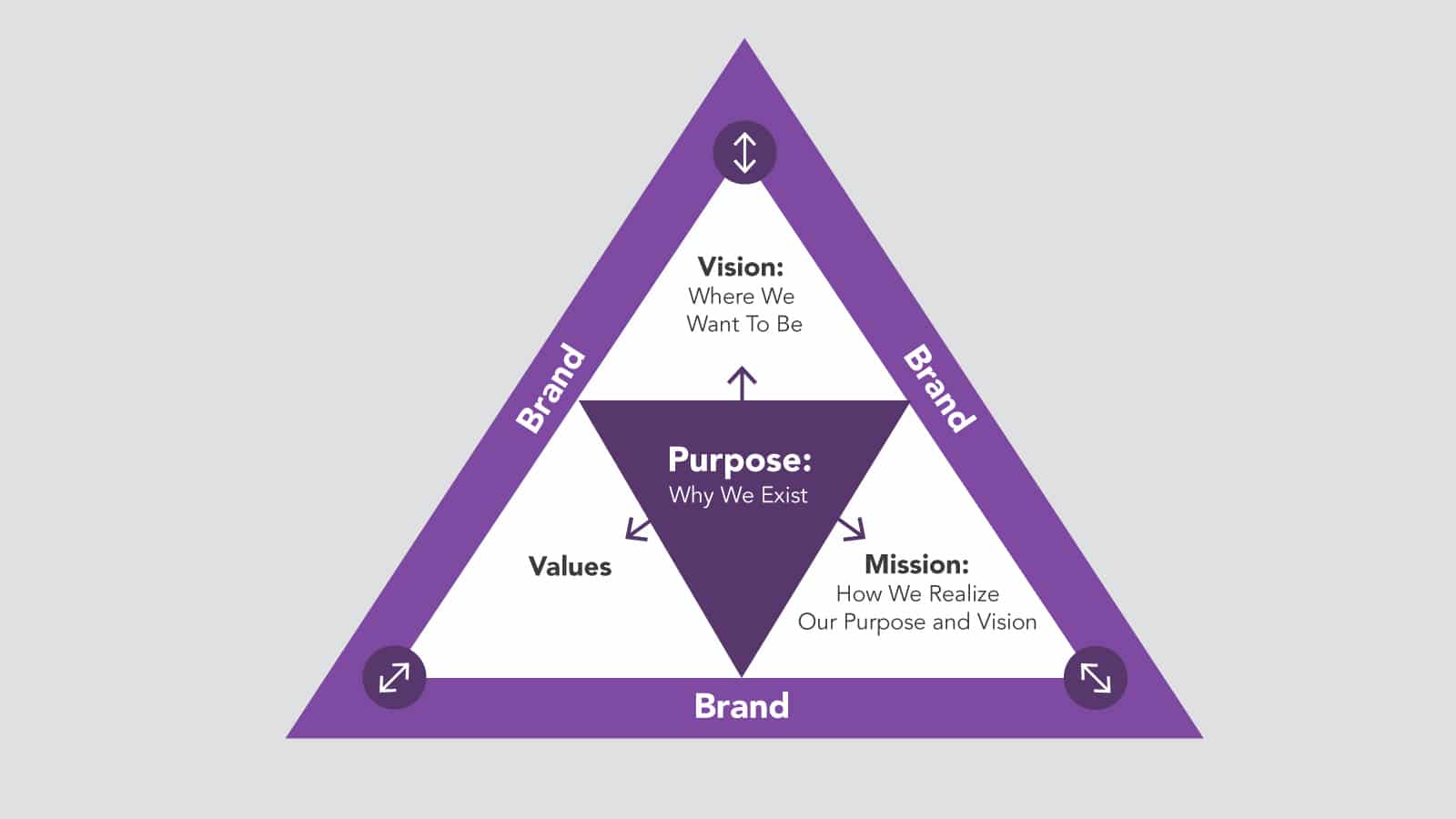What We’re Hearing from Our Clients
Perhaps it was the global pandemic that made everyone question basic assumptions about what’s important and seek a higher purpose, in both their professional and personal lives. Or perhaps it’s just the recognition, borne out by research, that purpose-driven companies tend to outperform. Either way, CEOs and CMOs are looking for ways to infuse their brands with a sense of purpose.
A purpose-driven company stands for something bigger than its products and services. And a purpose-driven brand transcends the surface-level product or service it reflects to communicate what a company does to solve or ameliorate a deeper need in society. According to PwC, 79% of business leaders believe that purpose is central to success. Despite this, less than half of employees know what their organization stands for and what makes it different.
If there’s any lingering resistance to becoming a purpose-driven organization, it’s the notion that purpose and profit are at loggerheads. In fact, several recent research studies have shown that this is not the case. According to a Deloitte survey, purpose-oriented companies have higher productivity and growth rates, along with a more satisfied workforce who stay longer with them. The Deloitte research shows that such companies report 30 percent higher levels of innovation and 40 percent higher levels of workforce retention than their competitors.
One reason for this outperformance by purpose-led companies is they tend to connect more reliably with customers. A 2019 Deloitte consumer survey showed that while price and quality remain the biggest factors driving customer decisions, many of the same respondents (55 percent) believe businesses today have a greater responsibility to act on issues related to their purpose.
Dig deep to find your purpose
For many bottom-line-focused companies, identifying their purpose isn’t easy. They need to dig deep—and have the courage to stake a claim to a purpose that isn’t always obvious.
Consider UBS, one of the world’s largest financial institutions. Its purpose, “reimagining the power of investing and connecting people for a better world,” demonstrates a belief that its core business benefits society. This may not be an obvious statement for a profit-driven financial competitor, but in fact it serves as a powerful motivator to the company’s global workforce.
Intel’s stated purpose is to “create world-changing technology that improves the life of every person on the planet.” Unilever exists “to make sustainable living commonplace.” Notice that in each of these examples, the purpose uses the company’s actual products as a springboard for a much higher ambition. At the same time, the purpose is closely related to the company’s brand.
Brands and Purpose
The most powerful brands and the most impactful purpose statements always work symbiotically, each strengthening the other. As this chart indicates, purpose lies at the very heart of an organization’s culture, and is the inspiration for its mission (the value it delivers), its vision (what it wants to be in the future) and its values (the beliefs that drive behavior). Brand reflects all of these elements and, if properly activated both internally and externally, supports them.

Subscribe to Our Newsletter
We’re often asked by clients a variation of the “chicken and egg” question: Which comes first, the brand or the purpose? And the answer is…it depends. Many companies with a well-defined brand seek to imbue it with a sense of purpose. In this case, the challenge is to identify a purpose that is both authentic to the company and supports—and is in turn supported by—the brand.
This was the case with a client of ours, a global investment bank with a brand based on the idea of connection—between the bank and its clients, and among the bank’s global workforce, who collaborate across borders to benefit clients. Its purpose statement, developed with input from senior leaders and employees, is “to create exceptional opportunities for our clients, colleagues and communities to thrive.” Underlying the purpose is the connections among clients, the firm’s employees, and the communities in which they all live and work. The brand and purpose are symbiotically aligned.
A more common scenario is when a company wants to create a new brand and identify a purpose at the same time. This is the case when a global consulting firm asked DeSantis Breindel to create a new brand to reflect several major acquisitions. The firm wanted to honor its long-standing legacy of working with not-for-profits and government agencies by building a sense of purpose into the brand. The brand we created was all about the company’s rare ability to take on complex challenges: “Let’s make big things possible.” The purpose statement we developed in partnership with the firm’s leadership provided some definition of what the company meant by “big things”: “to build a more prosperous and resilient world for all.” Again, brand and purpose support each other.
Sometimes a company has a strong purpose but wants a new brand. A Fortune 500 specialty chemicals company with a growing focus on the energy industry had a century-long legacy of supporting the global communities where it had operations; this legacy was deeply ingrained in the company’s culture. But there was no connection between this strong sense of purpose and the company’s brand. We created a new brand that honored the legacy of the company’s purpose while connecting it to the industry it was targeting for growth. “Powering the Potential of People” is both a brand statement (the company’s chemicals are transforming the power industry by tapping the potential for energy storage) and a statement of purpose (what they do helps people realize their potential).
Make it Authentic
Like brands, purpose statements are only effective if they are authentic to the business itself. And as with brands, this means that purpose must be reflected in behaviors. The investment banking firm mentioned above, seeking to live up to its stated purpose of “creating opportunities to thrive,” encourages its people to reach out proactively to clients with perspectives and advice that could help them grow regardless of whether or not there was potential for an immediate transaction. CVS “lived” its purpose—“Bringing our heart to every moment of your health”—by banning cigarette sales in its stores, foregoing a lucrative source of revenue.
While the impact of the COVID pandemic may be waning, the eagerness for purpose-driven brands shows no sign of abating. Identifying, communicating, and living a purpose-driven brand usually requires an investment of time, energy, and resources. But the investment more than pays off in a more engaged workforce and deeper customer relationships.



